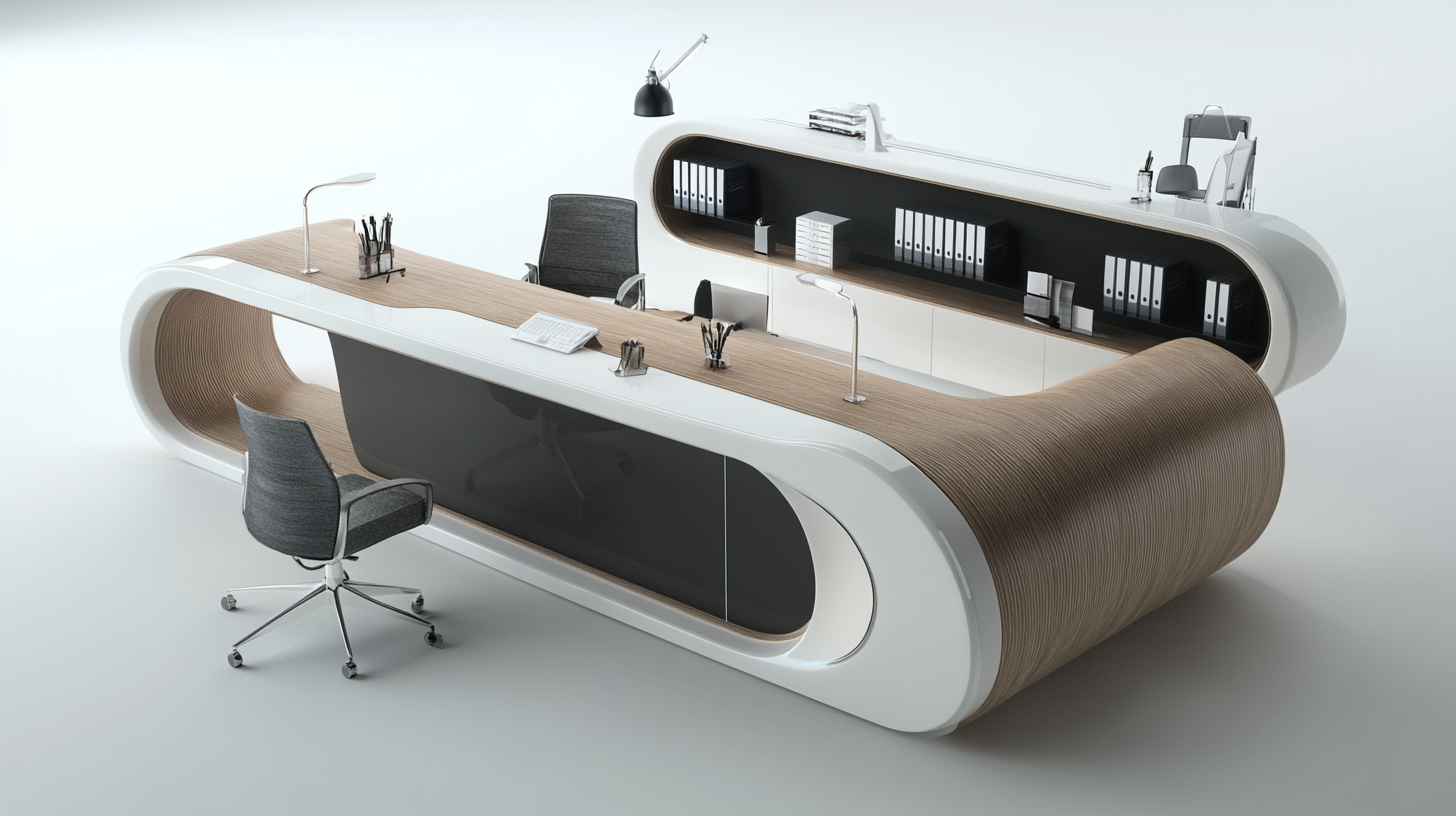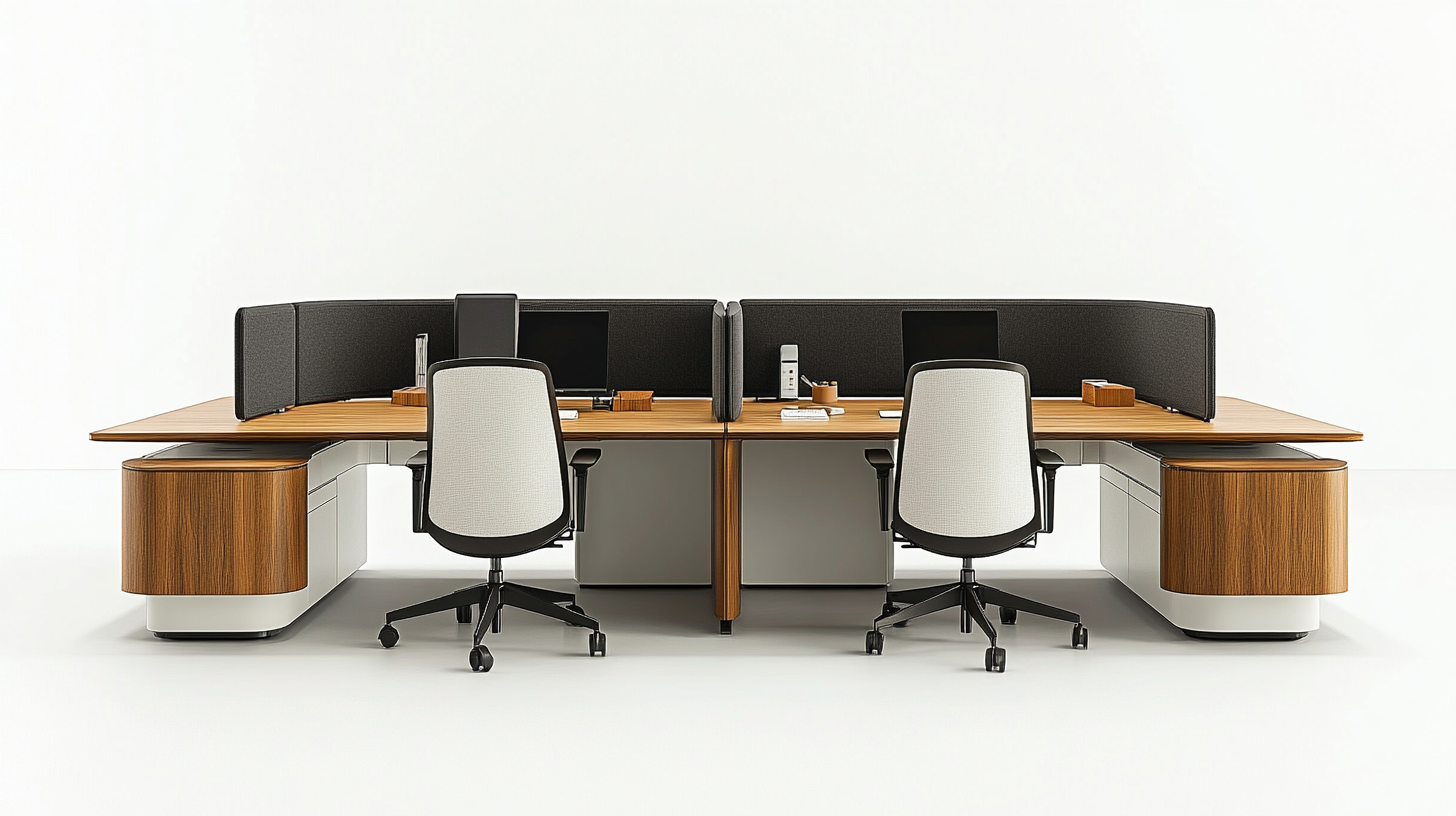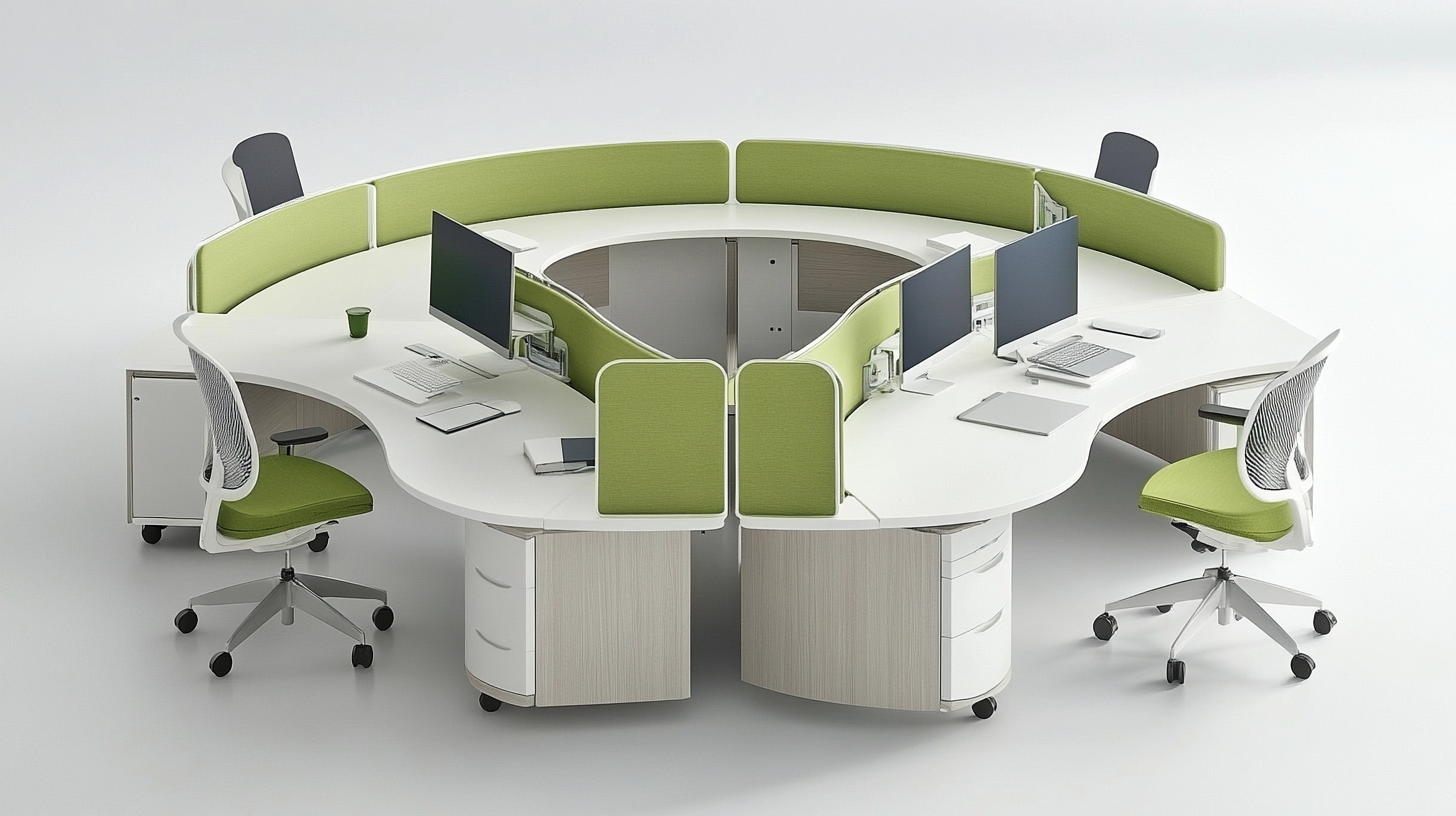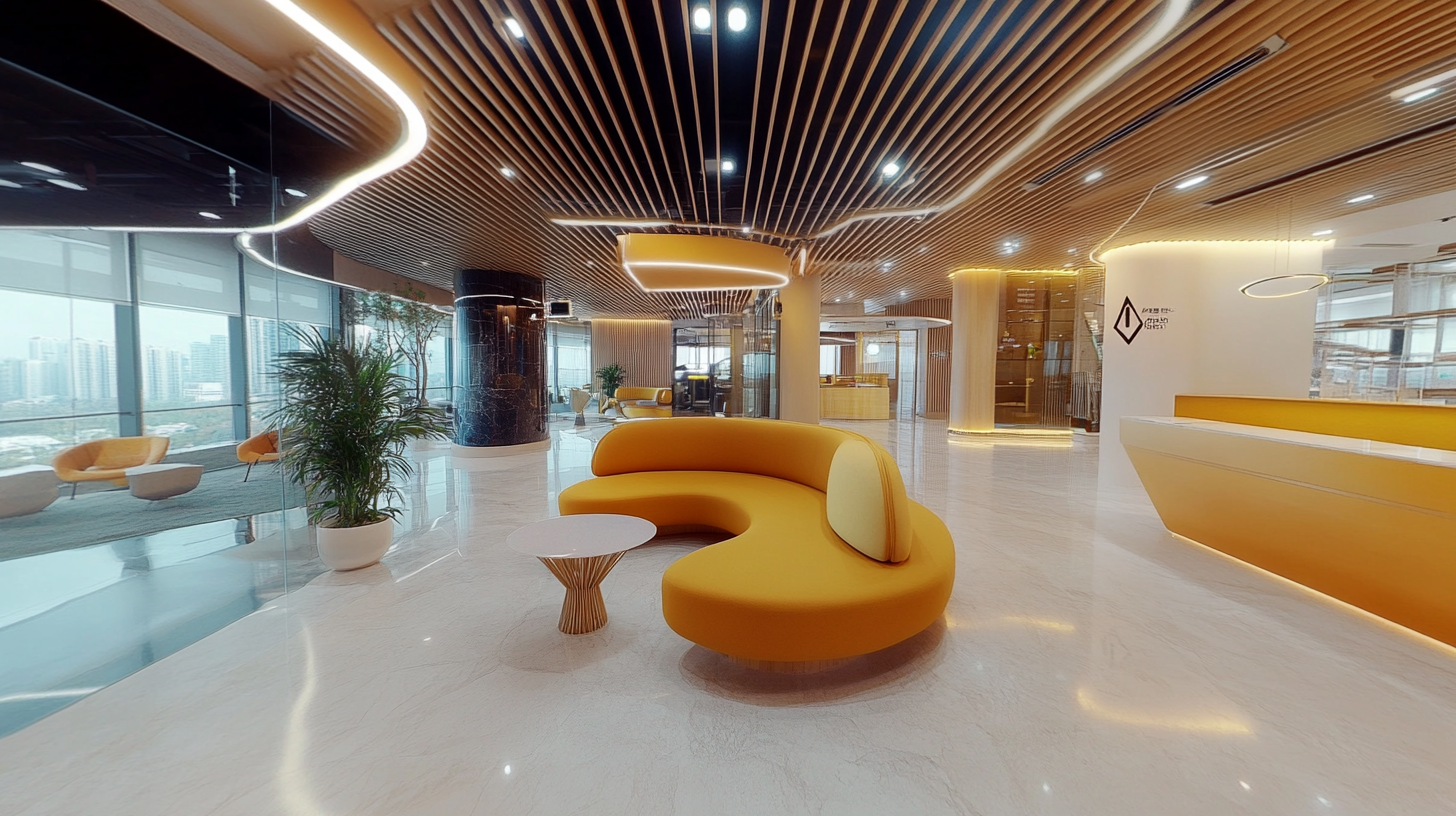In recent years, the office furniture industry has experienced significant evolution, driven by changing workplace dynamics and the increasing emphasis on employee well-being and productivity. According to a report by MarketsandMarkets, the global office furniture market is projected to reach USD 65.5 billion by 2025, growing at a CAGR of 5.6% during the forecast period. This growth is attributed to the rise in remote work and flexible office designs, prompting businesses to rethink their office furniture solutions to create collaborative and efficient environments.
The diverse range of office furniture solutions available today reflects the need for functionality, aesthetics, and adaptability. From ergonomic chairs that enhance comfort to modular desks that facilitate teamwork, the modern office is becoming a space that caters to various needs. A study conducted by Steelcase revealed that 87% of employees feel more productive in a well-designed workspace. This blog will delve into the unique features and applications of various office furniture solutions, highlighting how they contribute to a productive and engaging work atmosphere.

The evolution of office furniture has seen a remarkable transformation from traditional wooden desks and chairs to modern, multifunctional solutions that cater to the dynamic needs of contemporary workspaces. In the past, office furniture was primarily designed for functionality, with an emphasis on durability and formality. Sturdy wooden furniture dominated the scene, offering a sense of permanence and professionalism. However, as work environments began to evolve, so did the designs and purposes of office furniture. Today, the modern office embraces flexibility and adaptability, reflecting the changing nature of work itself. With the rise of remote work and collaborative environments, furniture solutions have shifted towards modular designs that encourage interaction and teamwork. Standing desks, ergonomic chairs, and adjustable workstations represent just a fraction of the innovative approaches employed to enhance employee well-being and productivity. Furthermore, the focus on aesthetically pleasing designs has led to an array of materials and styles that not only serve practical purposes but also contribute to the overall ambience of the workplace. This evolution is not just about adapting to new work styles; it also embodies a growing awareness of sustainability and functionality. Manufacturers are increasingly prioritizing eco-friendly materials and practices in their production processes. As a result, modern office furniture is not only a tool for work but also a reflection of a company’s values and commitment to environmental responsibility. The importance of selecting the right furniture has never been more crucial, as it plays a fundamental role in shaping the workplace experience and fostering a culture of innovation and collaboration.

In today’s fast-paced work environment, the importance of ergonomic office furniture has gained substantial attention. According to a study by the American Chiropractic Association, around 31 million Americans experience lower back pain at any given time, frequently exacerbated by improper office seating. Ergonomic furniture solutions are designed to mitigate such issues, promoting healthy posture and reducing the strain on the body. Features such as adjustable chairs, sit-stand desks, and adequate lumbar support play a crucial role in creating a workspace that fosters comfort and productivity.
Research conducted by the University of California found that employees using ergonomic furniture reported a 17% increase in productivity. Adjustable chairs enable users to maintain optimal body alignment, while standing desks can encourage movement throughout the day, combating the detrimental effects of prolonged sitting. Furthermore, the Mayo Clinic emphasizes that even minor adjustments in workspace setup can lead to significant improvements in concentration and job satisfaction. As more companies recognize the correlation between ergonomic working conditions and employee performance, investment in these solutions becomes a critical business strategy.
The shift towards more flexible workspaces has also highlighted the role of ergonomic design in collaborative settings. With the rise of open-plan offices, the need for adaptable furniture that accommodates various work styles is essential. Studies indicate that 25% of employees feel that their current office environment does not cater to their comfort needs, resulting in distractions and decreased focus. By incorporating multifunctional ergonomic furniture, companies can create an inclusive atmosphere that supports diverse work preferences and enhances overall productivity.

In today's fast-paced work environment, maximizing space has become a critical aspect of office design. Innovative storage solutions not only contribute to a tidier workspace but also enhance productivity and employee morale. One of the standout trends is the incorporation of modular furniture, which allows for personalized configurations that adapt to the specific needs of any office layout. This flexibility is essential in the modern world, where remote and hybrid work models are increasingly common.
Vertical storage options are another effective way to optimize office space. By utilizing wall-mounted shelves and cabinets, businesses can free up precious floor space while keeping essential items easily accessible. These solutions also lend themselves to creative organization, allowing employees to personalize their work areas without making them cluttered. Another emerging trend is the integration of multifunctional furniture, such as desks with built-in storage compartments or benches that double as storage units. These designs not only save space but also contribute to a more streamlined and aesthetically pleasing office environment.
Furthermore, innovative storage solutions cater to the need for sustainability in modern offices. Many manufacturers are now producing eco-friendly storage options made from recycled materials or sustainably sourced wood. This conscious approach to office furniture not only supports environmental initiatives but also demonstrates a company's commitment to corporate responsibility, further enhancing its image in the eyes of employees and clients alike. By embracing these innovative storage strategies, businesses can transform their workspaces into efficient, organized, and inspiring environments.

The aesthetics of office furniture plays a crucial role in shaping brand identity and influencing employee productivity. According to a study by the International Journal of Workplace Health Management, aesthetically pleasing environments can enhance focus and reduce stress levels by up to 30%. This indicates that when companies invest in attractive and functional furniture, they are not only creating a visually appealing workspace but also demonstrating their commitment to employee well-being, which in turn can enhance their brand reputation.
Different styles and colors of office furniture can significantly convey a company’s values and culture. For instance, a tech startup might opt for modern, minimalist furniture in vibrant colors to reflect innovation and dynamism. In contrast, a law firm may choose traditional, dark furniture to evoke professionalism and stability. Research from Steelcase suggests that 75% of employees feel more productive in environments that align with their company’s mission and design ethos. Therefore, selecting office furniture that aligns with a brand's identity is not merely a stylistic choice; it is a strategic decision that impacts both employee satisfaction and brand perception.
Furthermore, the growing trend toward sustainable design in office furniture also reflects how aesthetics can align with brand values. A survey conducted by the Green Building Council revealed that 56% of employees prefer to work in environments that are not only stylish but also demonstrate a commitment to sustainability. Companies that curate their workspace with eco-friendly furniture not only enhance their visual appeal but also position themselves as environmentally conscious brands, which can significantly attract talent and customers alike. By understanding and leveraging the intersection of aesthetics and brand identity through thoughtful furniture choices, organizations can foster an inspiring workplace that echoes their core values.
In the current landscape of office furniture solutions, sustainability has emerged as a paramount consideration for eco-conscious consumers. According to the PwC 2024 Voice of the Consumer Survey, individuals are willing to pay an average of 9.7% more for sustainably produced goods, reflecting a significant consumer shift driven by increasing awareness of environmental issues. This readiness to invest in eco-friendly furniture underscores a broader trend where businesses and individuals alike are seeking solutions that not only meet functional needs but also align with their values regarding climate change and resource conservation.
Governments in various countries, particularly in Europe, are facilitating this transition through legislative measures aimed at promoting sustainable practices within the office furniture industry. For instance, France's recent regulations mandating reuse and eco-responsible materials have spurred manufacturers to innovate and prioritize sustainability in their product offerings. This shift is not just regulatory; it also resonates with the growing market demand for furniture made from recycled materials, including ocean plastics. As more companies embrace this eco-friendly approach, they are finding opportunities to attract consumers who prioritize sustainability, thereby enhancing their competitive edge in a crowded marketplace.
Moreover, advancements in technology have also contributed to the rise of sustainable office solutions. Products like Autonomous's $19,000 prefabricated backyard office, which offers solar capabilities and ergonomic work-from-home essentials, are paving the way for eco-friendly home office setups. These innovations showcase how sustainability is becoming integral to the design and functionality of modern office environments, helping to reshape consumer perceptions about what office furniture can and should be. As the eco-friendly furniture market continues to expand, its growth is not merely a trend; it represents a fundamental shift in consumer behavior and corporate responsibility towards a more sustainable future.
Update your browser to view this website correctly. Update my browser now
